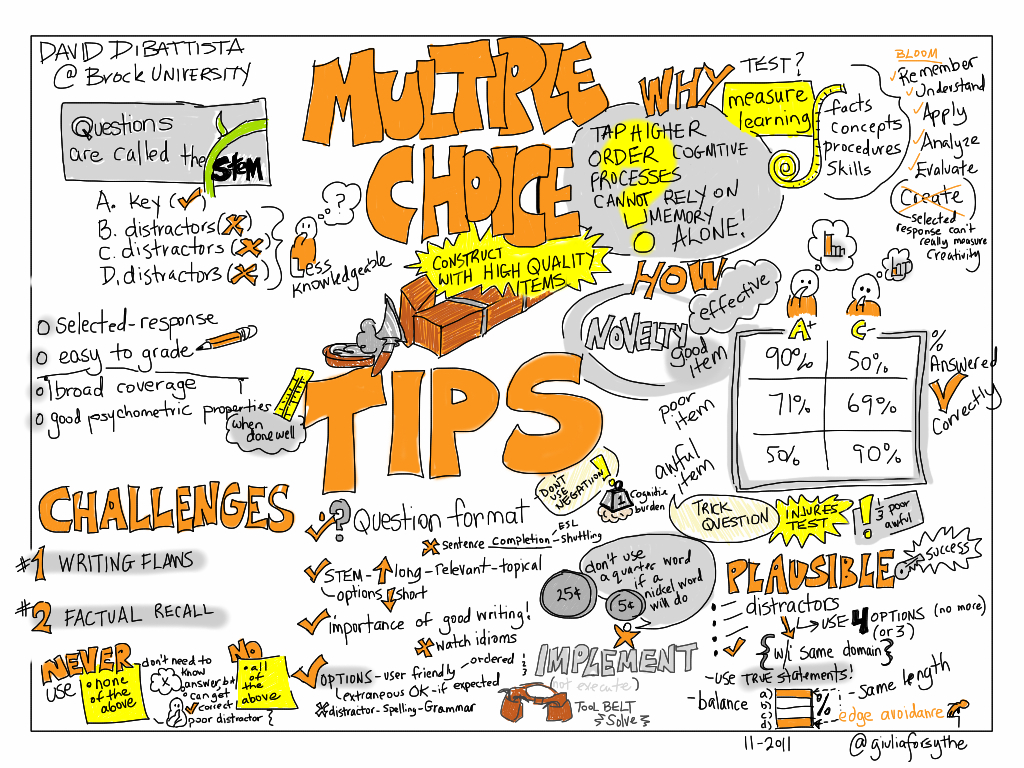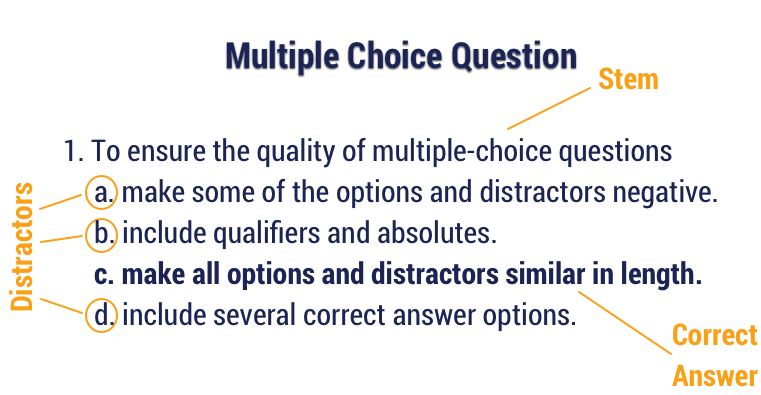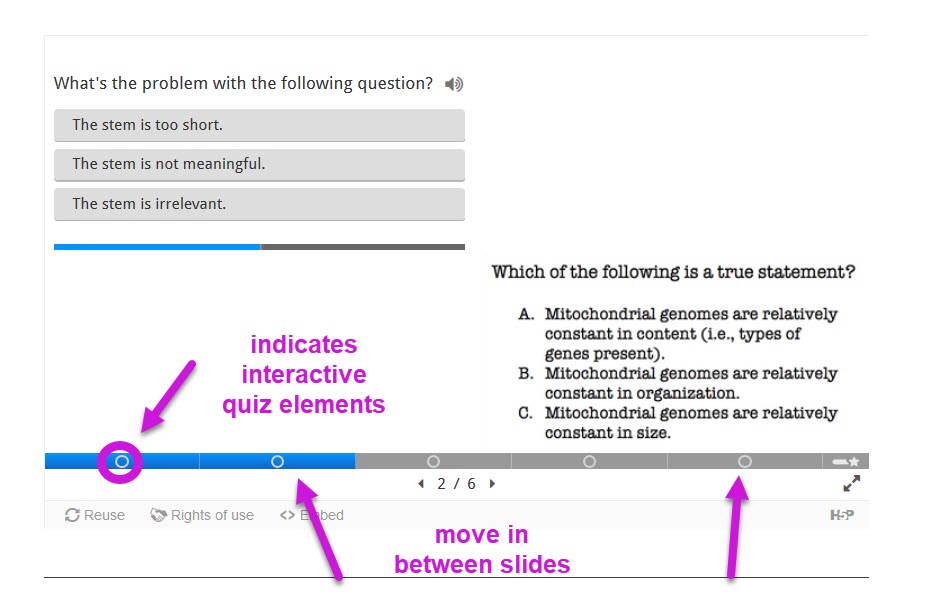Designing Multiple Choice Questions

Getting the Most Out of Multiple-choice Questions
CONTENT ON THIS PAGE:
Part I: General Introduction
Part II: Self-Evaluation Quiz
Part III: Video Tutorial
Part IV: Guidelines to writing good questions
PART V: Tips for Timing Your Questions
Part VI: References
Part I: General Introduction
 Description: A Multi-choice question is made up of two parts; (1) the question (or stem), and (2) a series of alternative or possible answers, where one of the answers is the correct answer, and the others serve as distractors. If students select the correct answer they get some marks, and if they select another answer they get no marks (or sometimes negative marking).
Description: A Multi-choice question is made up of two parts; (1) the question (or stem), and (2) a series of alternative or possible answers, where one of the answers is the correct answer, and the others serve as distractors. If students select the correct answer they get some marks, and if they select another answer they get no marks (or sometimes negative marking).
Why use multiple choice questions for testing?
- Multiple choice test questions, also known as items, can be an effective and efficient way to assess learning outcomes granted that your test consists of effective items.
- Can cover a lot of facts in a short space
- “Easy” to construct
- Can assess distinguishing fact and opinion
- Can assess identifying cause and effect
What do I need to be mindful of?
- Can usually only assess simple recall of facts
- The “right” answer is often obvious
- Not necessarily easy to construct “good” items
- Ambiguity may promote merely “guessing.”
PART II: Self-Evaluation Quiz
Instructions: Check your multiple choice-related testing skills by taking the short self-evaluation quiz below.
Note that the navigation through the quiz pages are shown in the screenshot here:

Self-Evaluation Quiz:
Part III: Video Tutorial
In the video below, Dr. Richelle Marynowski takes you through the planning of good multiple choice questions, i.e. how to create good stems, alternatives (distractors) and the right answer.
Note that you can enlarge the video for a better viewing experience by clicking on the rectangular icon on the lower right of the video.
Part IV: Guidelines to writing good questions
Below you’ll find a list of suggestions. You can click on each of them if you need some more context.
PART V: Tips for Timing Your Questions
Planning for a multiple-Choice assessment, you should be aware of the following general recommendations (UCD Teaching and Learning) relating to the set-up of the overall assessment in a course. Also note the importance of communicating to students the relative effort required to successfully complete an assessment, which is the case of Multiple-Choice Test of an hour usually require of students an additional 9 hours of preparation.
- Heavy assessment workloads may lead to surface learning (e.g. Entwistle and Ramsden, 1983; Kember and Leung, 1998).
- In general, excessive student assessment workloads lead to excessive staff workloads and tend to lead to poor ratings for teachers (Trigwell and Prosser; 1991).
- Fewer assessments create space for faster and better feedback.
- Programme Reviews often highlight student workloads as a problem. For example: “there appears to be a lack of an effective mechanism to plan and monitor student assessment workload.
PART VI: More Resources
Feel free to browse the following guides on the preparation of multiple choice questions below:
1. Steven J. Burton et. al. How to Prepare Better Multiple Choice Test Items: Guidelines for University Faculty
2. Brigham Young University. 14 Rules for Writing Multiple Choice Questions
3. University of Waterloo. Designing Multiple Choice Questions
4. Jon Mueller. Authentic Assessment Toolbox
5. Duquesne University. Good, Better, Best Multiple Choice Exam Construction
6. University of Manitoba. Creating Multiple Choice Questions
Academic References:
DiBattista, D., & Kurzawa, L. (2011). Examination of the quality of multiple-choice items on classroom tests. The Canadian Journal for the Scholarship of Teaching and Learning, 2(2), Article 4 (23 pages). Free download at: http://ir.lib.uwo.ca/cjsotl_rcacea/vol2/iss2/4.
DiBattista, D. (2005). The Immediate Feedback Assessment Technique: A learner-centered multiple-choice response form. Canadian Journal of Higher Education, 35, 111-131.
DiBattista, D., Mitterer, J.O., and Gosse, L. (2004). Acceptance by undergraduates of the Immediate Feedback Assessment Technique for multiple-choice testing. Teaching in Higher Education, 9, 17-28.
Haladyna, T. M. (2004). Developing and Validating Multiple-Choice Test Items. 3rd edition. Mahwah, New Jersey: Lawrence Erlbaum Associates.
Haladyna, T. M. (1997). Writing Test Items to Evaluate Higher Order Thinking. Boston: Allyn and Bacon.

